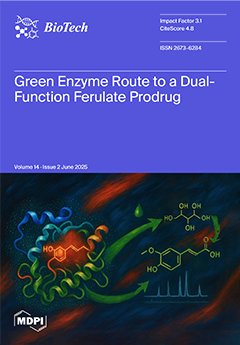Investigating the functional interactions between rumen microbial fermentation and epithelial mitochondrial dynamics/energy metabolism in Tibetan sheep at different altitudes, this study examined ultrastructural changes in rumen epithelial tissues, expression levels of mitochondrial dynamics-related genes (fusion:
Mfn1,
Mfn2,
OPA1,
Mic60; fission:
Drp1,
Fis1,
MFF), and ketogenesis pathway genes (
HMGS2,
HMGCL) in Tibetan sheep raised at three altitudes (TS 2500m, TS 3500m, TS 4500m). Correlation analysis was performed between rumen microbiota/metabolites and mitochondrial energy metabolism. Results: Ultrastructural variations were observed across altitudes. With increasing altitude, keratinized layer became more compact; desmosome connections between granular layer cells increased; mitochondrial quantity and distribution in spinous and basal layers increased. Mitochondrial dynamics regulation: Fission genes (
FIS1,
DRP1,
MFF) showed significantly higher expression at TS 4500m (
p < 0.01); fusion genes (
Mfn1,
OPA1) exhibited altitude-dependent upregulation. Energy metabolism markers: Pyruvate (PA) decreased significantly at TS 3500m/TS 4500m (
p < 0.01); citrate (CA) increased with altitude; NAD
+ peaked at TS 3500m but decreased significantly at TS 4500m (
p < 0.01); Complex II (SDH) and Complex IV (CO) activities decreased at TS 4500m (
p < 0.01). Ketogenesis pathway: β-hydroxybutyrate increased significantly with altitude (
p < 0.01); acetoacetate peaked at TS 2500 m/TS 4500 m;
HMGCS2 expression exceeded
HMGCL, showing altitude-dependent upregulation at TS 4500m (
p < 0.01). Microbiome–metabolism correlations: Butyrivibrio_2 and Fibrobacter negatively correlated with
Mic60 (
p < 0.01); Ruminococcaceae_NK4A214_Group positively correlated with
Mfn1/OPA1 (
p < 0.05); WGCNA identified 17 metabolite modules, with MEturquoise module positively correlated with
DRP1/Mfn2/MFF (
p < 0.05). Conclusion: Altitude-induced ultrastructural adaptations in rumen epithelium correlate with mitochondrial dynamics stability and ketogenesis upregulation. Mitochondrial fission predominates at extreme altitudes, while microbiota–metabolite interactions suggest compensatory energy regulation mechanisms.
Full article






